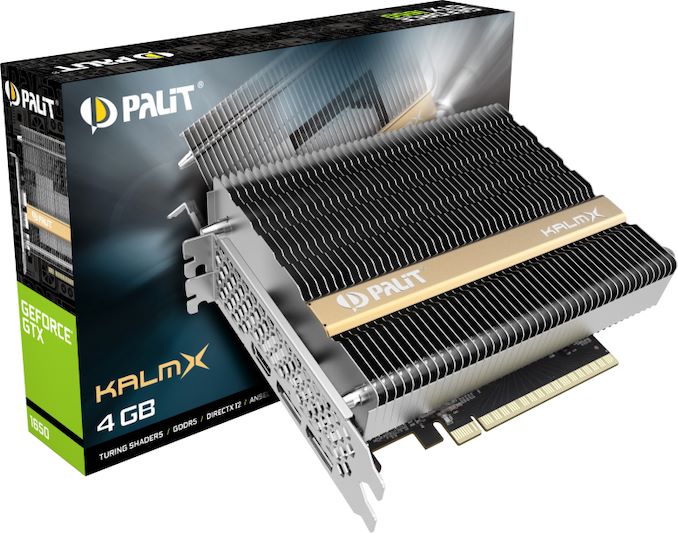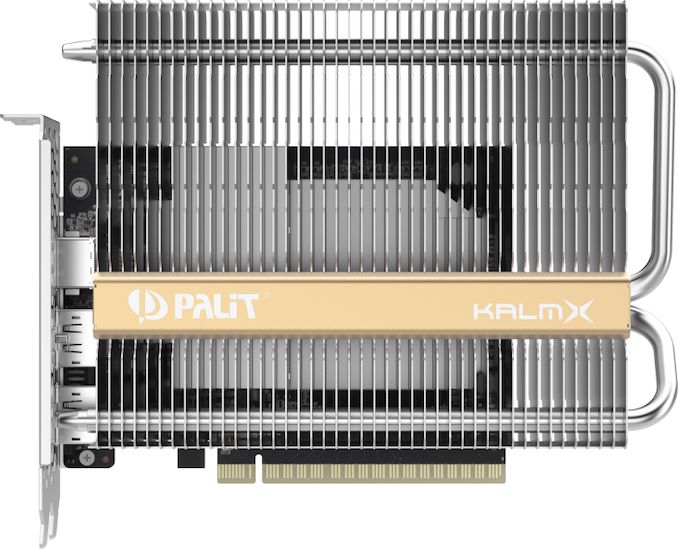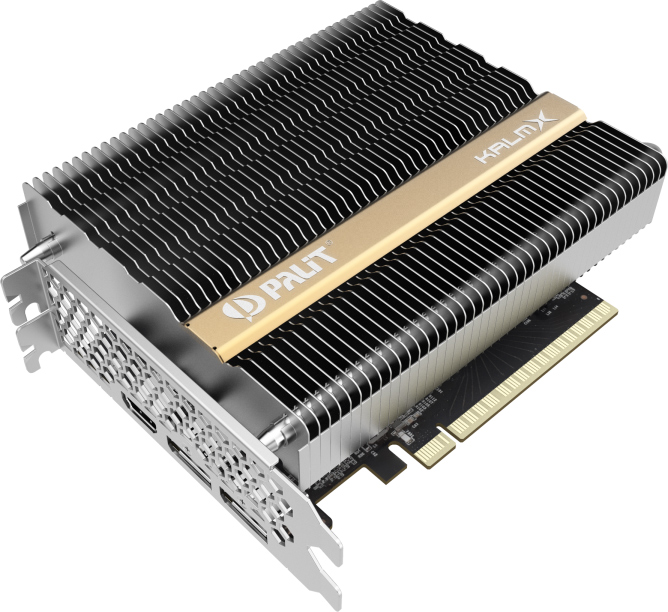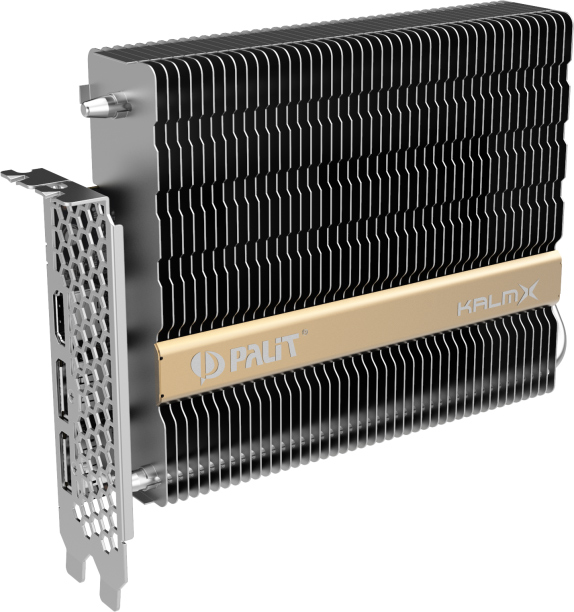A Passively-Cooled GeForce GTX 1650: KalmX by Palit
by Anton Shilov on February 7, 2020 5:00 PM EST
Passively-cooled video cards are rather rare these days, as the bulk of the market has made peace with today's dual fan actively cooled cards. Luckily, there are a still a few companies releasing passive designs, such as Palit Microsystems, who has introduced its fanless GeForce GTX 1650 KalmX.
The Palit GeForce GTX 1650 KalmX (NE5165001BG1-1170H) uses a custom PCB and comes with a sizable passive cooling solution. The double-wide heatsink incorporates a pair of heatpipes, and is considerably taller than the card as well. All told, with the heatsink factored in, the card measures 178 mm long and is 138 mm high. And unsurprisingly, given the strict thermal limitations in play, Palit is playing things conservatively here, and the card runs at NVIDIA official GTX 1650 reference clockspeeds of 1485 MHz/1665 MHz (base/boost).
Typical for GTX 1650 cards, Palit is using 4 GB of 8 Gbps GDDR5 memory here. The card has two DisplayPort 1.4a outputs and one HDMI 2.0b port.
Officially, Palit rates the card for a TDP of 75W; and judging from what we've seen with other GTX 1650 cards, that's probably a bit conservative as well. Which is all the better for Palit, since it makes their job of passively cooling the video card all the easier. The other upside of being a sub-75W card is that an auxiliary PCIe power plug isn't required, so the card can be dropped into a system and immediately used with no further internal wiring.
Palit has not revealed an MSRP for the GeForce GTX 1650 KalmX. NVIDIA’s regular MSRP for the GTX 1650 ($149), though I wouldn't be too surprised to see Palit charge a premium for a unique, passively-cooled card.
Related Reading:
- Palit Announces KalmX: A Passively-Cooled GeForce GTX 1050 Ti Graphics Card
- Akasa's Turing: A Passively-Cooled Chassis for Intel’s Bean Canyon NUC
- Compulab Passively-Cooled Airtop2 Inferno with GeForce GTX 1080
- Calyos NSG Cube: Passively Cooled SFF PC with Intel Core and GeForce GTX 1060
- GALAX Launches Low Profile GeForce GTX 1050 OC and 1050 Ti OC
- GIGABYTE Quietly Launches Low Profile GeForce GTX 1050, 1050 Ti Graphics Cards
- MSI Adds Low-Profile GeForce GTX 1050 Ti to Lineup
Source: Palit













34 Comments
View All Comments
Spunjji - Monday, February 10, 2020 - link
In a standard ATX tower with a vertically mounted motherboard, around 50% of the heatsink's area is unobstructed by the PCB and air can freely flow up through the fins.In a case with a horizontally-mounted board where the card is mounted vertically, air flows freely up through all of the fins.
So that's two common situations where convection flow works well and you just need fans to carry away the heat.
Having the fins run parallel to the motherboard works great in situations where you have guaranteed forced front-to-back cooling, like 2U servers, but it's absolutely terrible when you can't guarantee strong airflow - which defeats the point of a "silent" card.
damianrobertjones - Sunday, February 9, 2020 - link
I owned (2017) a Palit GeForce GTX 1050 Ti in my editing rig and, despite having NO games hitting the thing it broke in less than 1.5 years. The pc has a front fan etx. Shame as it's obviously silent. Be wary.Alistair - Sunday, February 9, 2020 - link
If the MSI Gaming X 1650 Super has a heavier heat sink, it most likely cools better. I was annoyed that Palit and this article don't have any stats or info about the heat sink.There is a 30 watt gap at max load, but the 1650 Super is 38 percent faster for the same money. I do it all the time, make passive systems out of the best video cards that come with fans.
peevee - Monday, February 10, 2020 - link
I love it, although I guess it would not work to well in a tower case (the board would be on top and heatsink on the bottom preventing normal flow of a heated air).